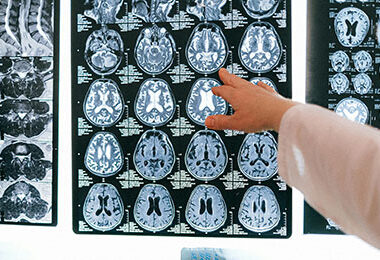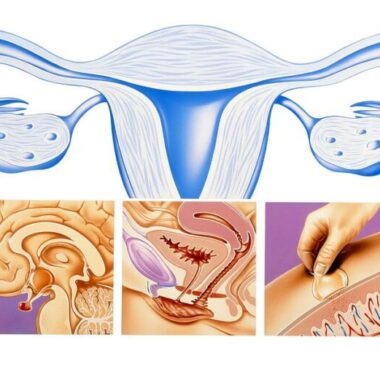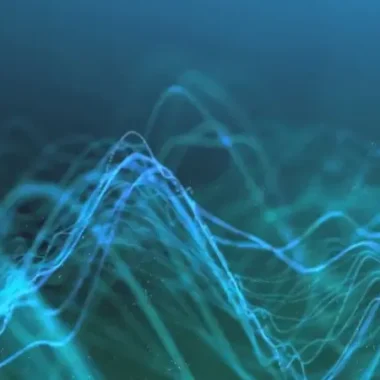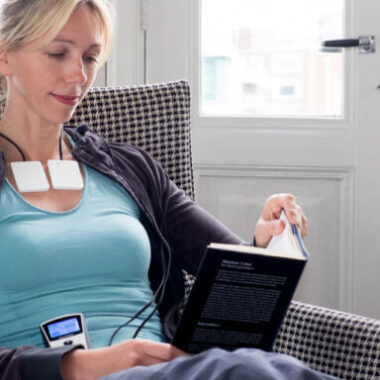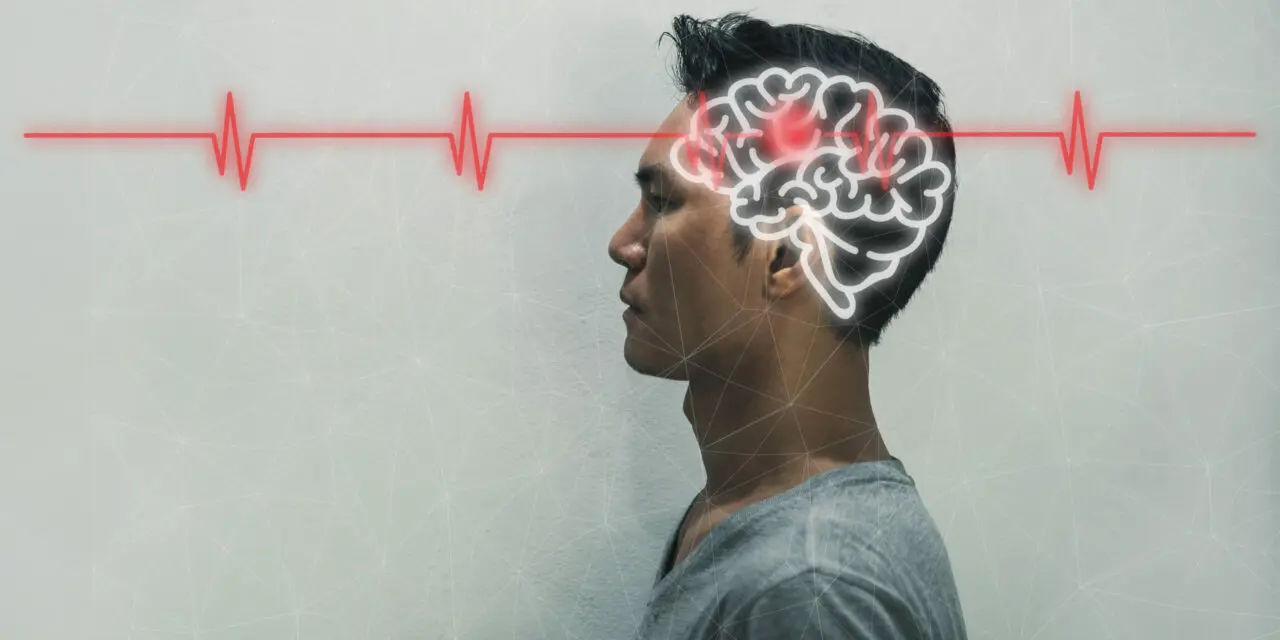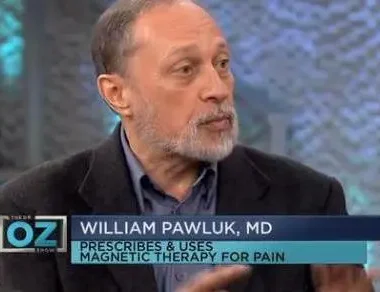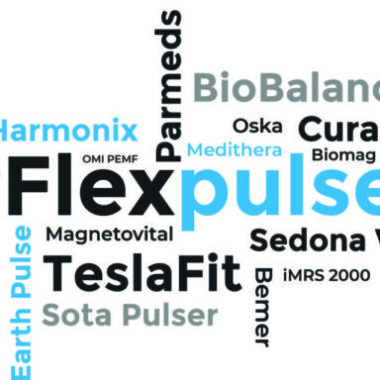HISTORY OF MAGNETIC FIELD THERAPY

WHAT IS MAGNETIC FIELD THERAPY?
On the simplest level, magnetic field therapy refers to using magnets to treat illness and maintain health. Both the Earth and the human body naturally produce electromagnetic fields. However, we can also produce dynamic electromagnetic fields using specifically designed technology. Those who practice magnetic field therapy believe that interactions between the human body, the Earth, and other electromagnetic fields can cause both physical and emotional changes in humans. Practitioners of this type of therapy also believe that the body’s electrical and electromagnetic fields need to be balanced to maintain optimal health. They apply magnetic field therapy outside the body using magnetic fields that can be:
- Electrically charged, which deliver magnetic pulses to the treatment area
- Stationary and static (not electrically charged), which deliver continuous treatment to local areas of the body for longer periods
- Combined with acupuncture needles for treating energy pathways within the body
WHAT IS A MAGNETIC FIELD?
An illustration of a magnetic field is used to describe how a magnetic force distributes in spaces around and within a magnetic object or the source of a magnetic field. Most people are familiar with everyday magnetic objects and it’s widely known that magnets have two poles. Depending on the orientation of any two magnets, attraction or repulsion exists. With opposite poles, there will be attraction, while there will be repulsion with two similar poles. The region that extends around a magnet where either attraction or repulsion occurs is known as the magnetic field.

Our Earth is actually a giant magnet, getting its magnetic field from circulating electric currents within its molten metal core. The reason a compass points north is because its magnetic needle is suspended so as to spin freely and align itself with the Earth’s magnetic field. In fact, what we know as the North Pole is truly a south magnetic pole attracting the north magnetic pole of a compass needle.
There is a difference between the magnetic field produced by a magnet compared to that produced by current flowing through a wire. The magnetic field from a magnet is static, that is, it is not in motion. It’s just there. The magnetic field produced by a current fly through a wire is dynamic and based on the frequency of the flow of the current. The current flowing through power lines has a frequency of between 50 to 60 Hz for the most part. That means the magnetic field is pulsing as the current pulses, and is therefore dynamic as opposed to static. Hence the term pulsed electromagnetic fields [PEMFs]. As a result of the pulsations of PEMFs, they are therapeutically more dynamic as well with a vast range of therapeutic options.
ANCIENT HISTORY
The use of magnetic fields for healing is not modern. Long before the reasoning for their benefits was understood, ancient medicine was incorporating magnetic therapies into their medical therapies. Around 4000BC Hindus refer to treatment of disease with magnetized stones (lodestones). In 2000BC, Chinese physicians developed written protocols for using lodestones on acupuncture points, as described in “The Yellow Emperor’s Book of Internal Medicine.” There is some evidence that Egyptian physicians used lodestones with some regularity, and that Cleopatra herself wore a small magnet in an attempt to preserve her youth. In ancient Greece, Hippocrates was reported to use magnets for pain, and even had people in his healing centers lay their heads on lodestones to alleviate their headaches.
EARLY AND MID-MODERN HISTORY
In the early 1500s, Swiss physician and alchemist Paracelsus, credited as the founder of toxicology, appeared to have used lodestones to treat seizures and psychiatric disorders. He used the then-undiscovered or otherwise misunderstood principles of magnetism to guide his practices in chemistry and symptom management.
In the mid-18th century, German physician Franz Mesmer developed a theory called “animal magnetism” to describe what he saw as the natural energy transference between all things. (This theory was later used by the Scottish physician James Brain to develop hypnosis and is sometimes equated with the Qi of Traditional Chinese Medicine.) Mesmer treated his patients with magnets, particularly in an effort to help psychiatric disorders.
In the late-18th century, German physician Samuel Hahnemann, widely known as the father of alternative medicine’s homeopathy, was reputed to use magnets in his treatment programs.
In the 19th century, the science around magnetic fields and electromagnetism began to come into focus. English scientist Michael Faraday contributed a great deal to the study of electromagnetism, including the discovery of electromagnetic induction, diamagnetism, and electrolysis. Faraday went on to create the first electromagnetic rotary device, forming the foundation of electric motors. His work in electromagnetism established for the first time that a changing magnetic field produces an electric field. This would later be named “Faraday’s Law”, one of the four Maxwell equations. Shortly before his death, he proposed the concept of electromagnetic fields – forces extending into the space around a conductor. He did not live to see the eventual acceptance of his theory.
Late in the 19th century, Russian engineer Georges Lakhovsky became the first to posit that each cell had its own frequency oscillating at a specific amplitude. He developed what is likely the first “energy medicine” device called the Multiple Wave Oscillator or Radio-Cellulo-Oscillator. The device produced a wide range of therapeutic frequencies, from ELF all the way up to gigahertz radiowaves.
20TH CENTURY
In the late 19th and early 20th centuries, Serbian-American inventor Nikola Tesla contributed to the development of the alternating current (AC) electrical system we use today, and discovered the rotating magnetic field (now the basis of most AC machinery). Tesla had an intimate understanding of the relationship between electricity and magnetic fields, and developed ideas for a huge number of inventions we use to this day: dynamos, induction motors, radar, X-Rays, and remote control being just a few. While the classic electrical device is the Tesla Coil (which produces streamers of electricity in a glass bulb – common attractions in children’s museums) a lesser-known electrical coil was also invented by Tesla. This is the standard magnetic loop coil seen in all PEMF systems today.
In the 20th century, sophisticated static magnetic therapies were being developed in the Czech Republic, including checkerboard-designed magnetic foils. PEMF devices began there as well, and were introduced in Hungary in the early 1980s. Soon thereafter, PEMF therapy spread to other parts of Europe, with a wide variety of devices being made available through a growing number of manufacturers.Simultaneously, Eastern European use and research began to blossom.
The 1980s also saw the introduction of the first FDA-approved PEMF system, intended for use as a bone stimulator to treat nonunion fractures. The seminal book “Body Electric: Electromagnetism and the Foundation of Life” was published in 1986 by Dr. Robert Becker and Gary Selden. This book is important because it was one of the first descriptions of the body as an electromagnetic apparatus and therefore very susceptible to magnetic field therapies. With the wide variety of devices available in Europe, by the late 1990s, much of Europe was already familiar with PEMF therapy.
The 1990s also saw a discussion about the use of PEMF devices in space. It remains a common misconception that PEMFs were or are used in space. The international space station is in low Earth orbit, well within the Earth’s magnetic field. As such, there really is little necessity for the application of external magnetic fields to maintain a functional biomagnetic field. In a discussion with the medical director of Russia’s space program at a meeting in Germany, it was made very clear that PEMFs are not being used on astronauts, but that the study of what would happen to the body were it outside of the Earth’s magnetic field is of great interest and importance as we consider venturing further out into space.
21ST CENTURY
There continue to be exciting new developments in the study of magnetic field stimulation of the body. There is a rapidly growing body of evidence to support the use of high intensity PEMFs, especially for the brain. This technology was developed primarily to avoid the need for electrical stimulation, which was effective, but incredibly uncomfortable and widely considered barbaric. Even so, electroconvulsive therapy (ECT) had been used for decades to treat psychiatric disorders. High intensity PEMF stimulation has been shown to have similar beneficial effects without the invasive or otherwise unbearable components of ECT, such as convulsions.
This specific type of PEMF therapy is known as transcranial magnetic stimulation (TMS). A high intensity coil is placed at the side of the head. The intensity of the magnetic field produced by the coil is increased until it is sufficient enough to cause a muscle contraction of the hand. Then the intensity is either maintained or lowered slightly, and the coil is moved to the part of the brain requiring the treatment, depending on the psychiatric indication of interest. Studies are also being done with these high intensity magnetic fields to treat other parts of the body for a huge variety of medical conditions.
In the meantime, other lower intensity PEMF systems continue to be developed, including for transcranial applications. Development of new systems is being made easier in the US by the recently updated FDA position, allowing PEMF systems to be marketed without FDA approval if their primary purpose is for the management of wellness.
MAGNETIC SCIENCE REVISITED
To understand magnetic science is to understand magnetism. Magnetism is one element of the combined electro-magnetic force. This term refers to any physical phenomena that arise from force caused by magnets. For clarity, magnets are objects that produce attraction to or repulsion from other objects. Motion of electrically charged particles gives rise to magnetism. Although all materials experience magnetism, only ferromagnetism can be felt by people, with rare exception. Ferromagnetism is the strongest type of magnetism and is responsible for the common magnetism encountered in everyday life. An example of a ferromagnet is a refrigerator magnet. This type of attraction was the quality of magnetism first apparent to the ancient world, as well as to us today.
HOW MAGNETIC THERAPY WORKS
The term “magnetic therapy” refers to various practices ranging from wearing a magnetized bracelet, to sleeping on magnetized mattresses, to therapy involving magnetic field machinery, small and large. When it comes to the effects that magnetic fieldshave on the body, there are multiple theories, all correct to some degree, none of which completely explain the magnetic phenomena. However, the general consensus is that magnetic fields act upon the body at the molecular level, by enhancing or affecting the natural electrical charges in the tissues that correct disruptions. According to laboratory studies, magnetic fields can modulate the transport of ions and related neuronal and cell activity. Through these actions magnetic field therapies have been found in hundreds of research studies to have benefits in numerous health conditions.
ILLUSTRATING MAGNETIC FIELDS
There are two ways to illustrate a magnetic field, with vectors or field lines. When we describe a magnetic field mathematically, it is known as a vector field, which we can plot directly as a set of vectors on a grid. Each vector points as a compass would, with a length that is dependent on the strength of the magnetic force. Alternatively, we can represent forces within a vector field using field lines. These disperse within a grid pattern and connect vectors with smooth lines.
Useful properties of a field-line description includes that field lines:
- • Never cross.
- • Naturally bunch together where magnetic fields are the strongest.
- • Don’t begin or end anywhere, making only closed loops.
MEASURING MAGNETIC FIELDS
There are two aspects of a magnetic field (a vector quantity) that we need to measure: its strength and its direction. While measuring the direction is quite simple, measuring the strength is significantly more challenging. We can use a magnetic compass to measure direction (the same kind of magnetic compass used for navigation using the Earth’s magnetic field). On the other hand, it takes a magnetometer to measure the strength of a magnetic field. Magnetometers have only been around since the 19th century and most function by exploiting the force electrons feel as they move through magnetic fields.
MORE ABOUT MAGNETIC FORCE
A magnetic force is a result of the electromagnetic force (one of the four basic forces of nature) and is due to the motion of charges. Two objects with charge of the same direction of motion will have a magnetic attraction to each other. In a similar fashion, two objects with charge moving in opposite directions will have a repulsion to each other. Essentially, a magnetic force arises as a result of interacting magnetic fields.
USES OF MAGNETIC THERAPY
Scientific evidence is constantly accumulating to support positive results of magnetic therapy. A significant amount of this is summarized in the book Power Tools for Health by Dr. William Pawluk, MD, MSc. Practitioners of magnetic therapy report that individuals find pain relief and other clinical benefits for the following conditions:
- Arthritis
- Fatigue
- HIV/AIDS
- Post-polio syndrome
- Fibromyalgia
- Muscle strains
- Immunodeficiency
- Infections
- Insomnia
- Inflammation
- Multiple sclerosis
- Sciatica
- Alzheimer’s
- Stress
- Circulatory issues
- Nerve pain, such as diabetic neuropathy
- Nausea and vomiting
- Wound healing

IS MAGNETIC FIELD THERAPY SAFE?
While there are certain people who shouldn’t use magnetic field therapy, it is not considered to have complications or negative side effects when used in conjunction with conventional medical treatment. Before trying magnetic field therapy or another complementary health practice, consult with your doctor about how it may relate to any existing health conditions. Pulsed magnetic field therapy has not yet been proven to be safe in pregnant women, and should be avoided or used with caution in individuals with implants or medical devices like pacemakers or implanted defibrillators. They should also be avoided in individuals with organ transplants since safety has not been established.
THE FUTURE OF MAGNETIC THERAPY
Magnetic field diagnostic techniques like magnetic resonance imaging (MRI) are becoming increasingly popular. You could even say that magnets and other electromagnetic devices are approaching mainstream medical acceptance for both diagnostics and treatment. There is hope among magnetic therapy practitioners that the medical community will begin to understand that this type of therapy has effective and predictable results. Furthermore, they hope that more will understand the safety of magnetic therapy since it doesn’t introduce foreign substances into the body as long-term medications do.
Predictions by proponents of magnetic field therapy include mainstream use for:
- Pain relief for infections, acidosis, local edema, and toxicity
- The healing process for bruises, broken bones, burns, chronic degenerative diseases, and environmental allergies
- Relief for Alzheimer’s and arteriosclerosis.
- Issues with insoluble calcium deposits in the brain and joints
- Management of cancer
- Improving scar tissue
- Facilitating treatment for bacterial infections, viruses, parasites, and fungi (currently, conventional medicine is having difficulty creating antibiotics fast enough to counteract microorganism mutation)
- Helping mental disorders like hallucinations, delusions, psychotic depression, and obsessive-compulsiveness
- Replacement of antidepressants, tranquilizers, sedatives and anti-seizure medications
- Correction of sleep disorders
Want to find out more? Reach out to us. We would love to share what we know with you. Watch the video below on pulsed electromagnetic field machines and how they can help you. We offer a buyers guide for those looking into PEMF for therapy.

